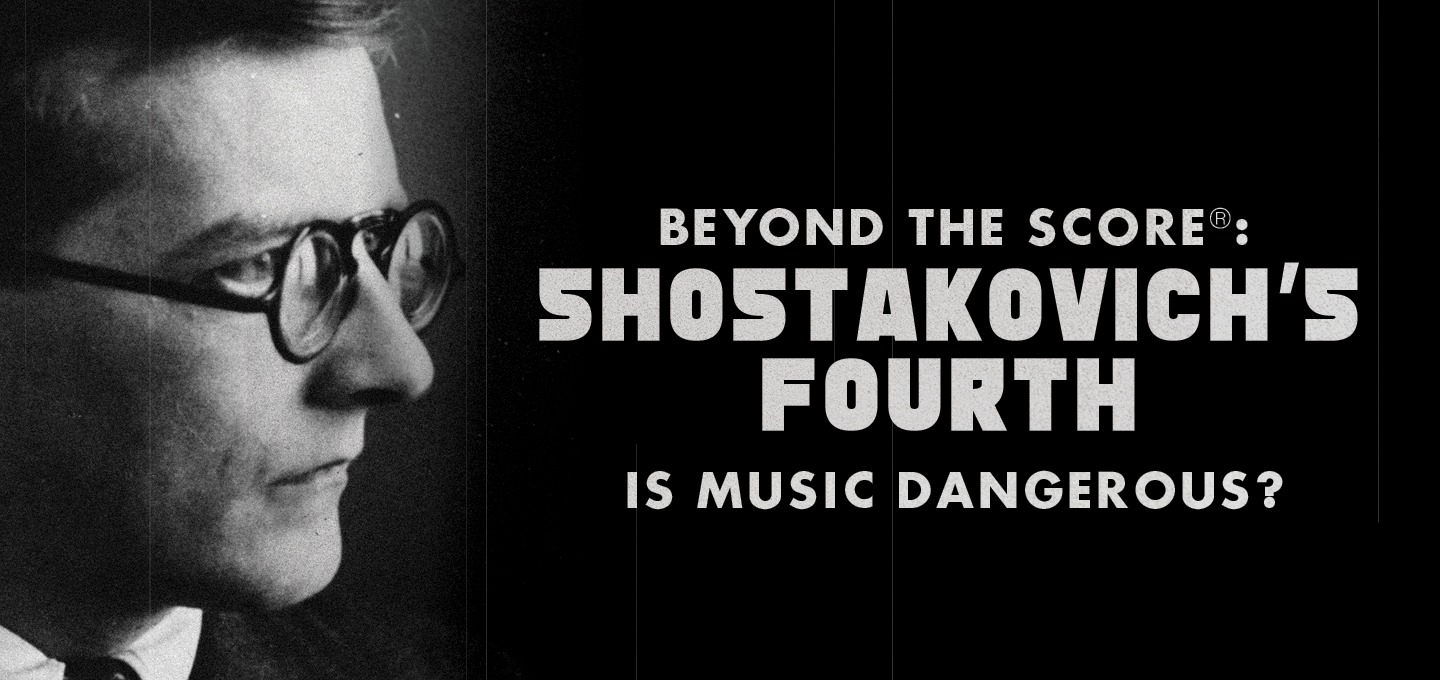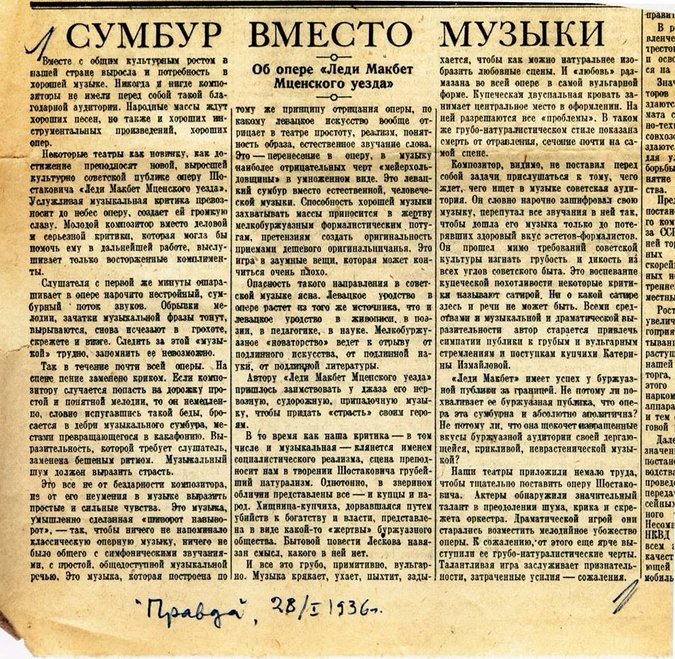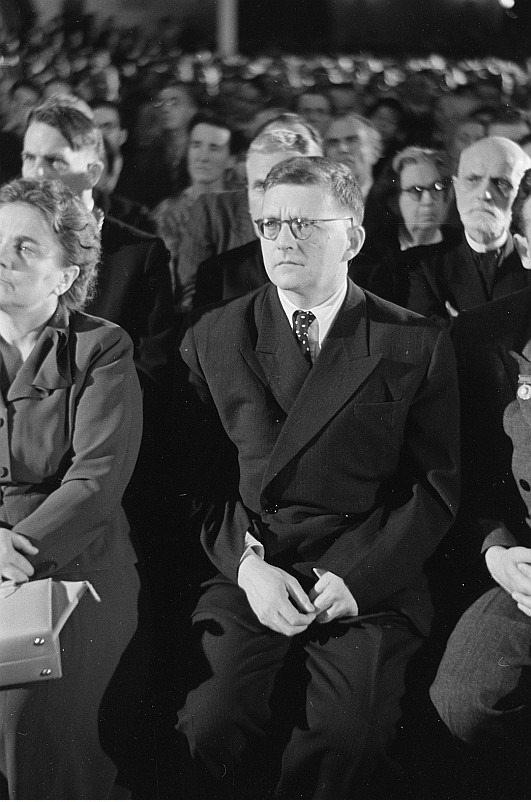Nashville Symphony News
Nashville Symphony Presents Beyond the Score®: Shostakovich’s Fourth – Is Music Dangerous?
The Nashville Symphony’s 2019/20 Classical Series resumes on September 27-28 at Schermerhorn Symphony Center with Beyond the Score®: Shostakovich’s Fourth – Is Music Dangerous?, a program centered around Dmitri Shostakovich’s Fourth Symphony that uniquely blends history and music for newcomers and aficionados alike.
Developed and licensed by the Chicago Symphony Orchestra, Beyond the Score® offers audiences a look into some of the classical repertoire’s most important composers and works through a multimedia experience that weaves together theater, music and video to tell the compelling stories that helped shape the music’s creation.

The Nashville Symphony’s performances open with a presentation exploring how the social and political climate in the Soviet Union influenced Shostakovich as he was composing the Fourth, complete with a live actor portraying the composer, a narrator, on-screen photos and videos, and musical excerpts performed by the orchestra. Following intermission, Music Director Giancarlo Guerrero leads the Nashville Symphony’s first-ever full performance of the entire Fourth Symphony.
About the Program

The Fourth is considered Shostakovich’s most experimental and profound symphony, and it still shocks to this day with its ferocious power and bleak honesty. Strongly influenced by Gustav Mahler, the work features the largest orchestration Shostakovich used in any of his 15 symphonies. But the music is only part of the story of this masterpiece, which came about during a dangerous time in Soviet Russia, when artists and intellectuals faced the threat of Joseph Stalin’s purges.
Shostakovich was already an international sensation before the Fourth. He composed his First Symphony as his graduation piece from the Petrograd Conservatory when he was only 19, and his opera Lady Macbeth of the Mtsensk District became a smash hit in Moscow and Leningrad in the mid-1930s. Despite its public success, the opera drew the ire of Stalin, who reportedly walked out of a performance two years after it premiered.
A January 1936 article about the opera, titled “Muddle instead of Music,” appeared in the official Communist Party newspaper Pravda further exacerbated Shostakovich’s plight, labeling the composer an example of a “dangerous trend” in Soviet music that was “distorting” the ideals of true Socialism.
From Victor Seroff’s translation:
“The composer apparently never considered the problem of what the Soviet audience looks for and expects in music. As though deliberately, he scribbles down his music, confusing all the sounds in such a way that his music would reach only the effete “formalists” who had lost all their wholesome taste. He ignored the demand of Soviet culture that all coarseness and savagery be abolished from every corner of Soviet life. Some critics call the glorification of the merchants’ lust a satire. But there is no question of satire here. The composer has tried, with all the musical and dramatic means at his command, to arouse the sympathy of the spectators for the coarse and vulgar inclinations and behavior of the merchant woman Katerina Izmailova.”
The article – published when composer had completed the bulk of the Fourth Symphony – put Shostakovich in a perilous position. People crossed the street to avoid him, and he allegedly kept a suitcase packed with warm clothing and sturdy shoes in anticipation of being shipped off to a gulag in Siberia.

Despite the Pravda attack, he pushed on and completed the Fourth in the spring of 1936. The premiere was scheduled for that December with the Leningrad Philharmonic, but Shostakovich pulled the piece during rehearsals. There is rampant speculation surrounding the withdrawal, the prevailing theory being that the state exerted pressure on the Leningrad Philharmonic and forced the orchestra’s manager to cancel the premiere.
Underlying this belief, biographer Laurel Fay noted that “given the political and aesthetic climate of the time, there seems very little doubt that even in a flawless performance the massive…work would have been construed as…an act in arrogant defiance of the Party’s benevolent guidance.”
Shostakovich did earn a temporary reprieve from the overbearing political pressure with his triumphant Fifth Symphony in late 1937, but the threat of making a false step remained throughout his career, and the state’s “disappearing” of the Fourth deeply affected him: “I was afraid,” he recalled years later. “Fear was a common feeling for everyone then, and I didn’t miss my share. The danger horrified me, and I saw no way out…. It was a low that wiped out my past. And my future. The terrible pre-war years. That is what my symphonies, beginning with the Fourth, are about.”
It was not until December 30, 1961, well after Stalin’s death, that the Fourth finally premiered.
Tickets for Beyond the Score may be purchased:
- Online at NashvilleSymphony.org/BeyondTheScore
- Via phone at 615.687.6400
- At the Schermerhorn Symphony Center Box Office, One Symphony Place in downtown Nashville
Full program notes, a Spotify playlist and video of Giancarlo Guerrero discussing the program, can be found at: https://www.nashvillesymphony.org/beyondthescore.



